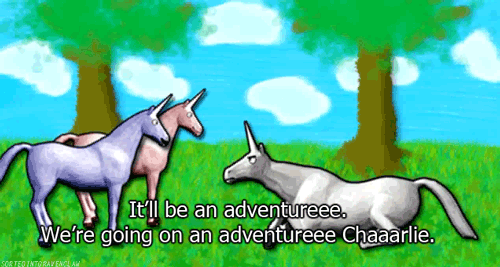
Yesterday, I was talking with some coworkers about books, and I’m preeeeetty sure I sucked up their entire lunch breaks with my chatter. We talked about all manner of literary bric-a-brac before settling on protagonists, and particularly heroes. One of them said she liked total Boy Scout heroes, while the other admitted to liking the bad boy heroes more. Then they both looked at me and asked about my favorite kind of hero, and I completely froze. After squeaking out the first name that popped in my head (Jesus, actually *face palm*) and then all of us collapsing on the check-out counter laughing, I realized I didn’t have a ready-made answer. What kind of hero do I like???
The thing I had planned to write for today got derailed, so this seemed like as good a topic as any! And this also seems like a pretty “clean slate” time to think about it too, since I’ve only read… two?… *sobs* fiction books for fun this year. So let’s take a quick look at five broad hero archetypes to refresh my desperately deprived lit brain and then we’ll make some choices!
(Note: maybe your freshman English teacher had a different number than five. Maybe six. Or eight! Or whatever. But if you think I’ve missed an important classification, give me a shout out in the comments! I’d love to hear more categories!)
The Everyman Hero Everyone from Bilbo Baggins to Homer Simpson (sort of?). This is just some rando guy who, for whatever reason, is out doing adventuresome things. No superpowers, nothing special. Just a normal person that the reader can feel kinship with as they head off into the unknown.
The Classical Hero Here we’ve got our Percy Jacksons and Luke Skywalkers, people who seem normal on the surface and who think of themselves as regular folks, but who are more than they seem upon closer inspection, able to weild previously unknown powers with just a bit of training. You’re a wizard, Harry!
The Epic Hero These people always knew they were playing with a stacked deck. These are folks like Wonder Woman, Gilgamesh, and Superman. Whether they’re superheroes, children of gods, or space aliens (or maybe all three!), these guys have been destined for greatness from birth.
The Tragic Hero Oh, Romeo, you could have just paused to think for five minutes. These are the heroes who almost had it all, but due to a fatal flaw or even just a trick of fate, they lose everything in the end. Whether it’s Oedipus or Ned Stark or Severus Snape, these noble(ish) characters all suffered a tragic hero’s fate in the end.
The Anti-Hero The Punisher seriously needs to talk to a therapist. These are the ends-before-the-means folks, the looking-out-for-number-one-ers, the people who can’t work within the law and don’t care much about collateral damage so long as they come out on top. The roguish Han Solos and the psychotic Deadpools and the incorrigible conman Phoney Bones. They’re not really villain villains, but they maybe kind of look like them.
Some heroes also pull double duty! Is Jay Gatsby with his criminal history and his single-minded dedication to stealing another person’s spouse a tragic hero or an anti-hero? (I despise him either way. Fight me.) And some heroes can be a little tricky to pin down. Would someone like Bruce Wayne or Tony Stark be a classical hero, who starts off as a normal dude but becomes great through hard work and choices, or are they more like epic heroes? Because, let’s face it, being born super wealthy is kind of like being born with superpowers. It can be fun to think of favorite characters and try to figure out what kind of hero they are.
Upon deeper reflection, the first fictional hero that popped in my mind as a potential favorite character is Aragorn from The Lord of the Rings. I’m sure someone already has, but I haven’t decided if I’d classify him more as a classical hero or an epic hero. I can see traits of both in him. But either way, he’s fabulous and I love him. I like a hero who stands up for people and fights for what’s right. I like a hero who is selfless and kind, someone who puts the wellbeing of others first without being a doormat himself. And if he also recites poetry, isn’t afraid to cry and hug his bros, and is good with a bow, then hot dang, we have a winner. Positive masculinity for the win!
Who’s your favorite fictional character? Do you have a particular category that you gravitate toward? Let me know in the comments below! And until next week, happy writing!


